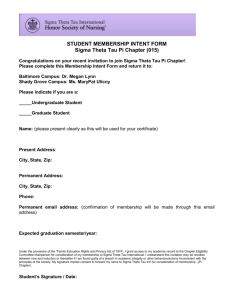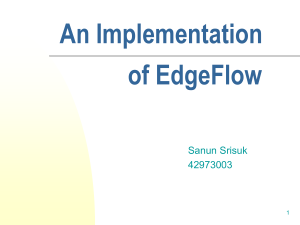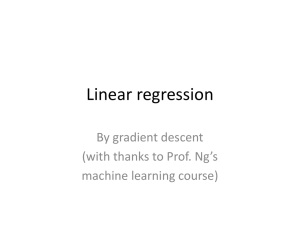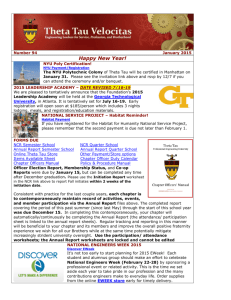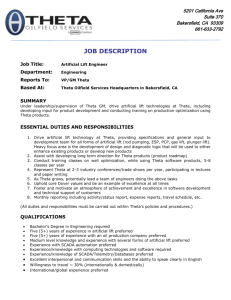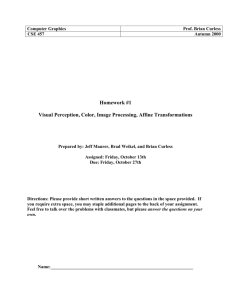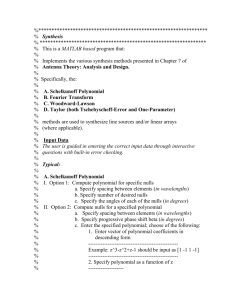appendixb.FINAL
advertisement
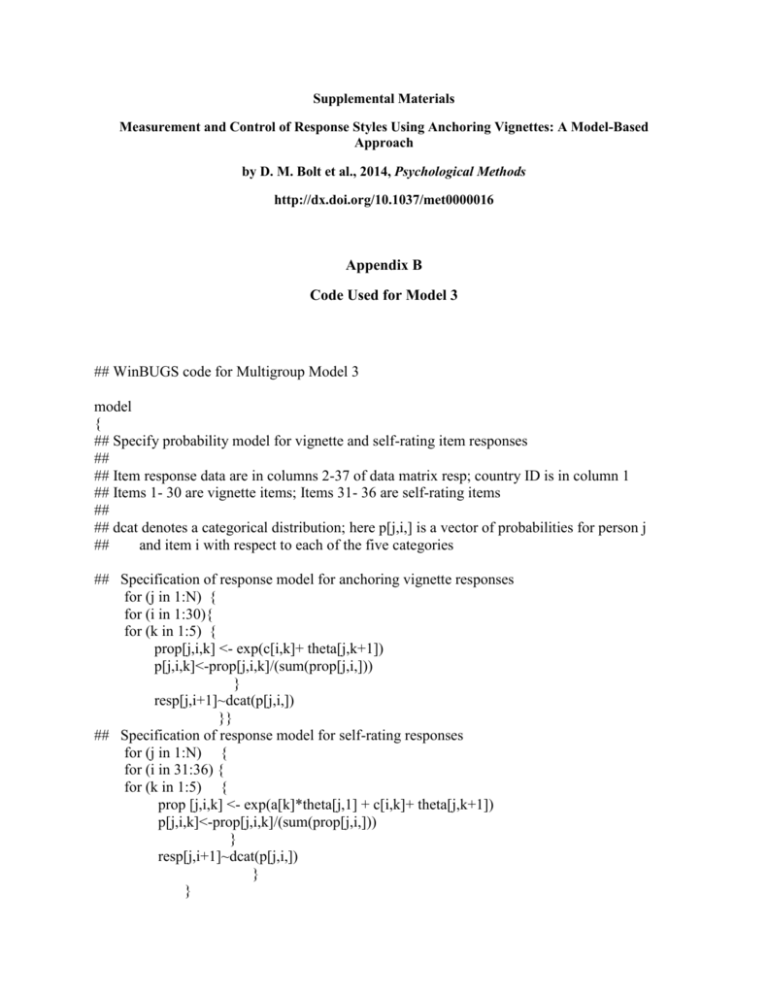
Supplemental Materials
Measurement and Control of Response Styles Using Anchoring Vignettes: A Model-Based
Approach
by D. M. Bolt et al., 2014, Psychological Methods
http://dx.doi.org/10.1037/met0000016
Appendix B
Code Used for Model 3
## WinBUGS code for Multigroup Model 3
model
{
## Specify probability model for vignette and self-rating item responses
##
## Item response data are in columns 2-37 of data matrix resp; country ID is in column 1
## Items 1- 30 are vignette items; Items 31- 36 are self-rating items
##
## dcat denotes a categorical distribution; here p[j,i,] is a vector of probabilities for person j
##
and item i with respect to each of the five categories
## Specification of response model for anchoring vignette responses
for (j in 1:N) {
for (i in 1:30){
for (k in 1:5) {
prop[j,i,k] <- exp(c[i,k]+ theta[j,k+1])
p[j,i,k]<-prop[j,i,k]/(sum(prop[j,i,]))
}
resp[j,i+1]~dcat(p[j,i,])
}}
## Specification of response model for self-rating responses
for (j in 1:N) {
for (i in 31:36) {
for (k in 1:5) {
prop [j,i,k] <- exp(a[k]*theta[j,1] + c[i,k]+ theta[j,k+1])
p[j,i,k]<-prop[j,i,k]/(sum(prop[j,i,]))
}
resp[j,i+1]~dcat(p[j,i,])
}
}
## Specify prior distributions for respondent parameters
## In Model 3, theta_1 = respondent-level substantive trait;
##
theta_2 - theta_6 correspond to respondent-level response style parameters (s_1 - s_5)
## dmnorm denotes a multivariate normal distribution here with mean
##
mus and inverse covariance matrix tau
for (j in 1:N){
theta[j,1:6]~dmnorm(mus[resp[j,1],1:6], tau[1:6,1:6])
}
## Specify prior distributions for country-level parameters
## dmnorm denotes a multivariate normal distribution, here with mean
##
mumn and inverse covariance matrix taumn
## dwish demotes a wishart distribution, here with scale matrix covpri
##
and degrees of freedom 40.
for (j in 1:NC){
mu[j,1:6]~ dmnorm(mumn[1:6],taumn[1:6,1:6])
}
tau[1:6,1:6]~dwish(covpri[1:6,1:6],40)
## Specify prior distributions for item category intercepts
## dnorm denotes a normal distribution, here with mean 0 and variance = 1/.2 = 5
for (k in 1:NI) {
for (m in 1:5) {
craw[k,m] ~ dnorm(0,.2)
}}
## Apply normalization constraint to item category intercept parameters
for (k in 1:NI) {
for (m in 1:5) {
c[k,m]<-craw[k,m] - mean(craw[k,])
}}
## Apply normalization constraint to respondent response-style parameters
for (j in 1:N) {
for (m in 1:5){
s[j,m]<- theta[j,m+1] - mean(theta[j,2:6])
}}
## Define grand-centered country mean parameters for substantive trait. This forces overall
country mean theta to 0
for (j in 1:22){
for (k in 1:6){
mus[j,k]<-mu[j,k]-mean(mu[1:22,k])
}
musth[j]<-mus[j,1]
}
## Define normalized country mean response style parameters for categories 1-5
for (j in 1:22){
for (k in 2:6){
ss[j,k-1]<-mus[j,k]-mean(mus[j,2:6])
}}
## Define country-centered respondent theta
for (j in 1:N){
thetas[j]<-theta[j,1]-mus[resp[j,1],1]
}
## Trace c for item category intercepts (i.e., Table 3)
## Trace thetas for respondent-level theta estimates (i.e., Table 4)
## Trace s for respondent-level response style trait estimates (i.e., Table 4)
## Trace mus for country level mean theta estimates (i.e., Table 5)
## Trace ss for country level mean response style estimates (i.e., Figure 4)
## Trace tau to reproduce latent trait correlation estimates (i.e., Table 2)
}
## Beginning of data list
## NC = number of countries (country regions)
## NI = number of items (vignette + self-rating)
## N = number of respondents
list(NC=22,NI=36,N=2965,
a=c(-2,-1,0,1,2),
mumn=c(0,0,0,0,0,0),
covpri = structure(.Data=c(41,0,0,0,0,0,0,41,0,0,0,0,0,0,41,0,0,0,0,
0,0,41,0,0,0,0,0,0,41,0,0,0,0,0,0,41), .Dim=c(6,6)),
taumn = structure(.Data=c(1,0,0,0,0,0,0,1,0,0,0,0,0,0,1,0,0,0,0,0,0,1,
0,0,0,0,0,0,1,0,0,0,0,0,0,1), .Dim=c(6,6)),
resp = structure(.Data=c(
1,1,1,2,5,5,2,2,2,4,4,1,1,2,5,5,3,2,2,5,5,1,1,4,5,5,1,2,3,3,4,4,1,5,3,2,2,
1,2,1,3,5,5,1,1,2,5,5,1,1,2,5,5,1,1,2,5,5,1,1,2,5,5,1,1,1,5,5,5,4,5,4,5,3,
.
.
.
.
.
.
.
.
.
22,1,1,4,5,5,2,1,2,4,5,NA,4,3,4,4,2,1,3,5,4,1,1,4,4,5,2,3,2,5,4,4,3,5,4,4,3), .Dim=c(2965,37)))
## End of datalist
